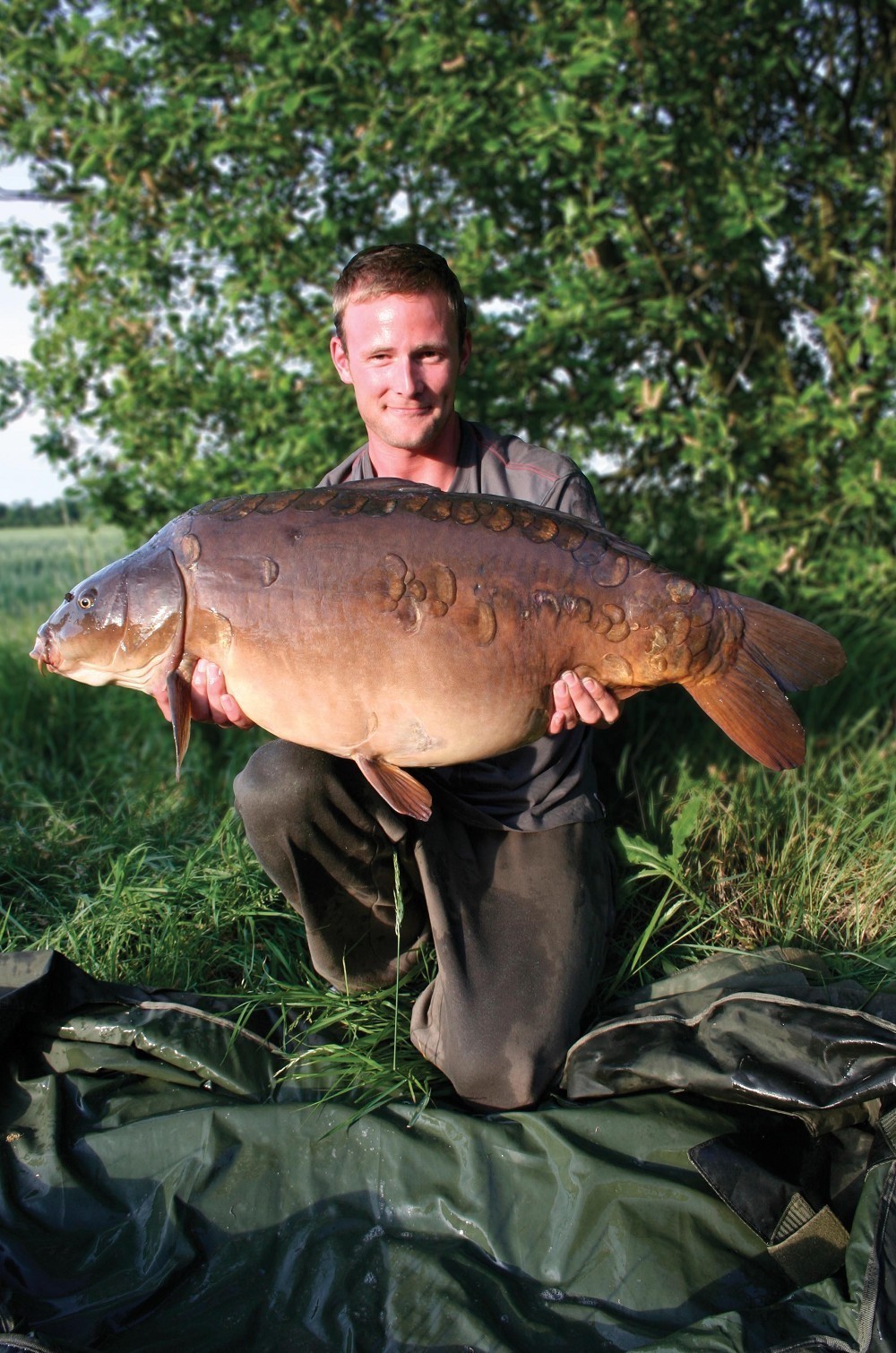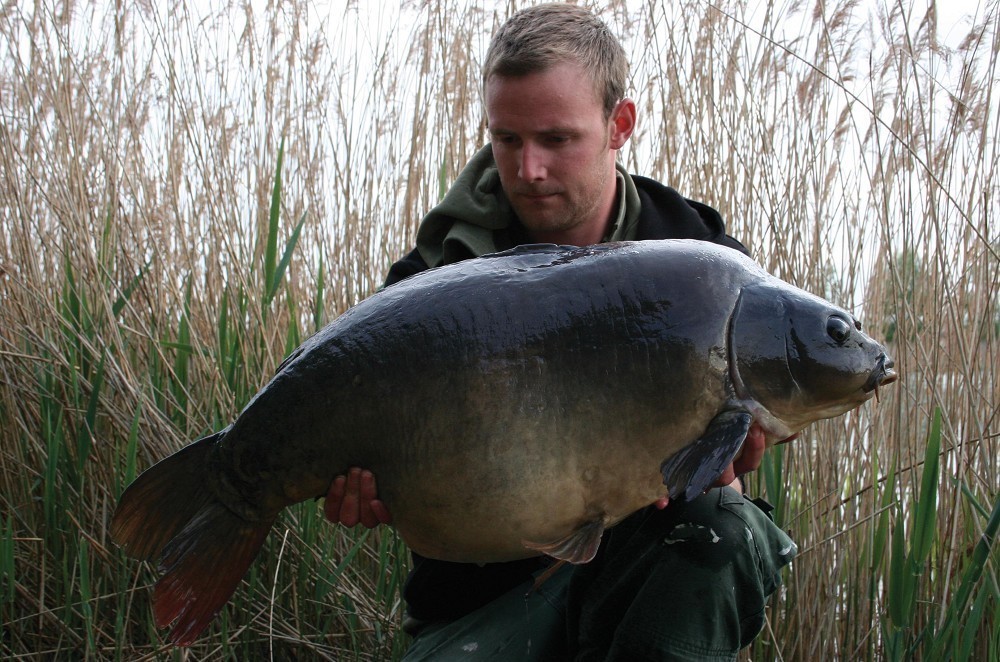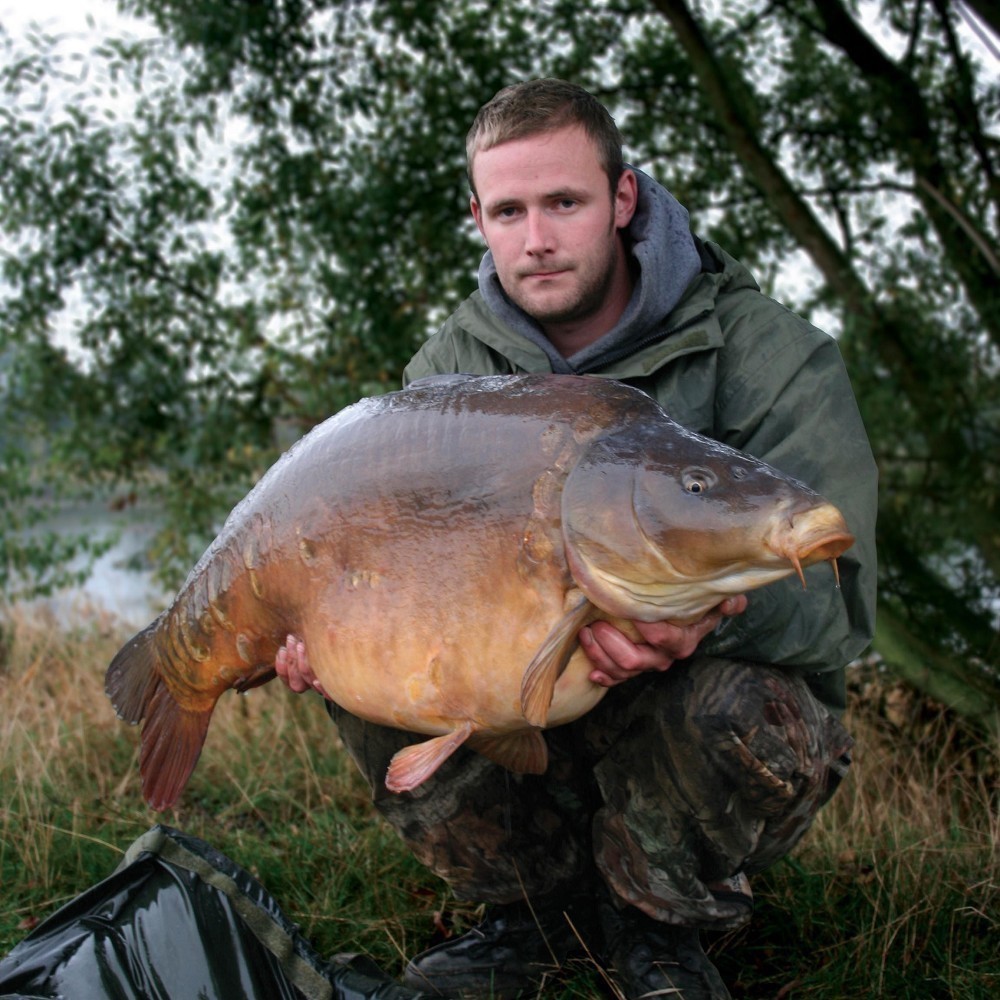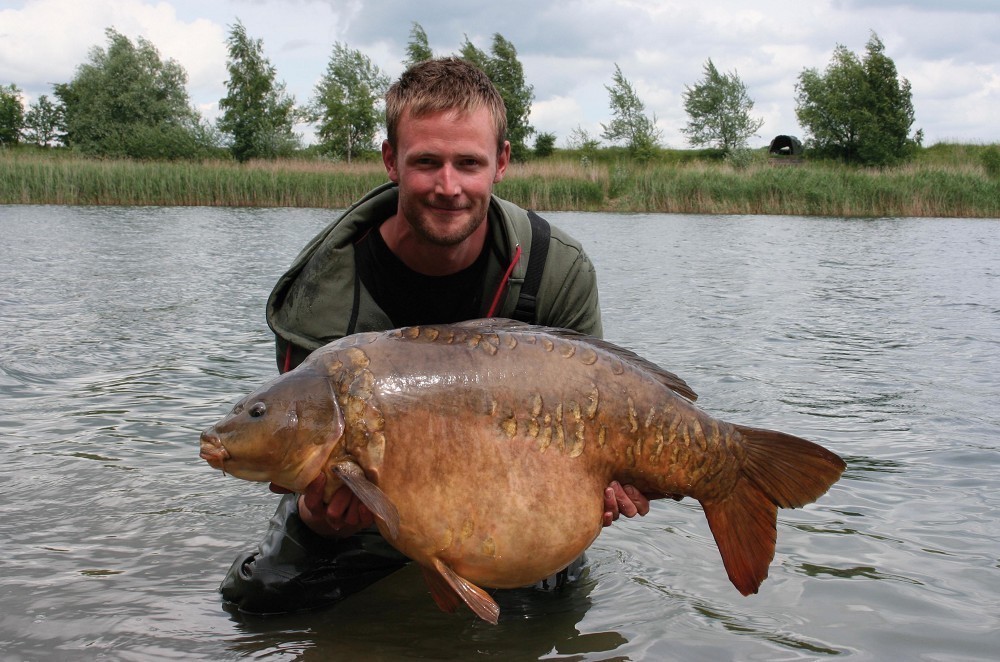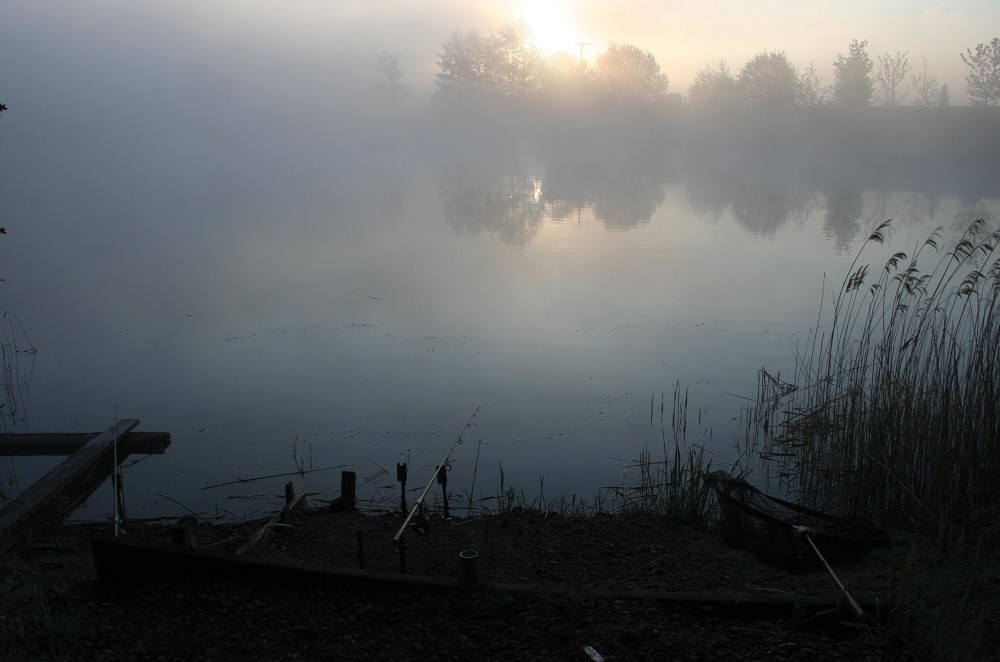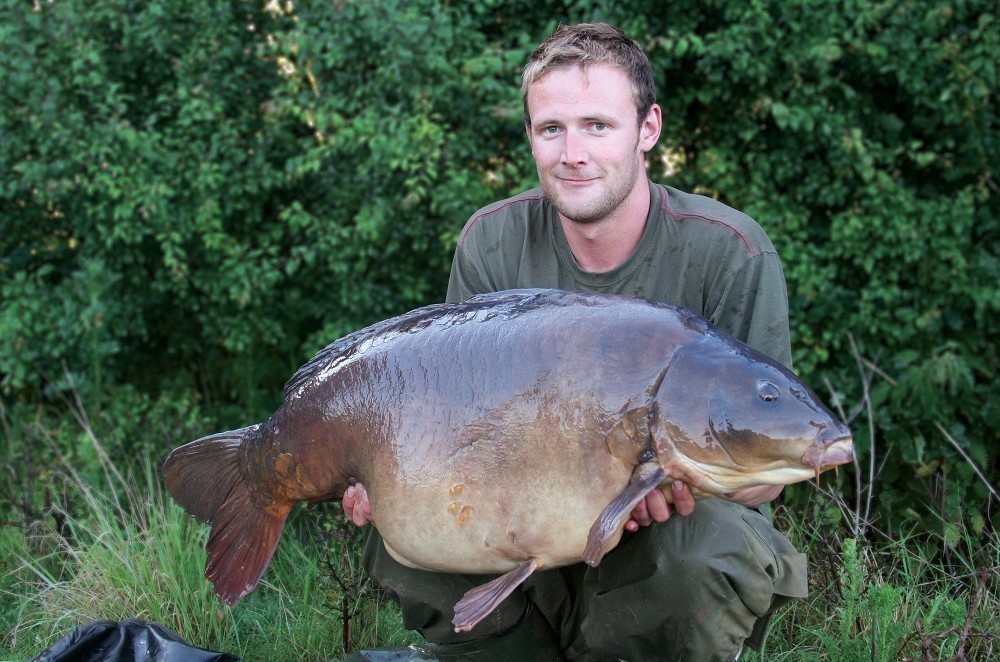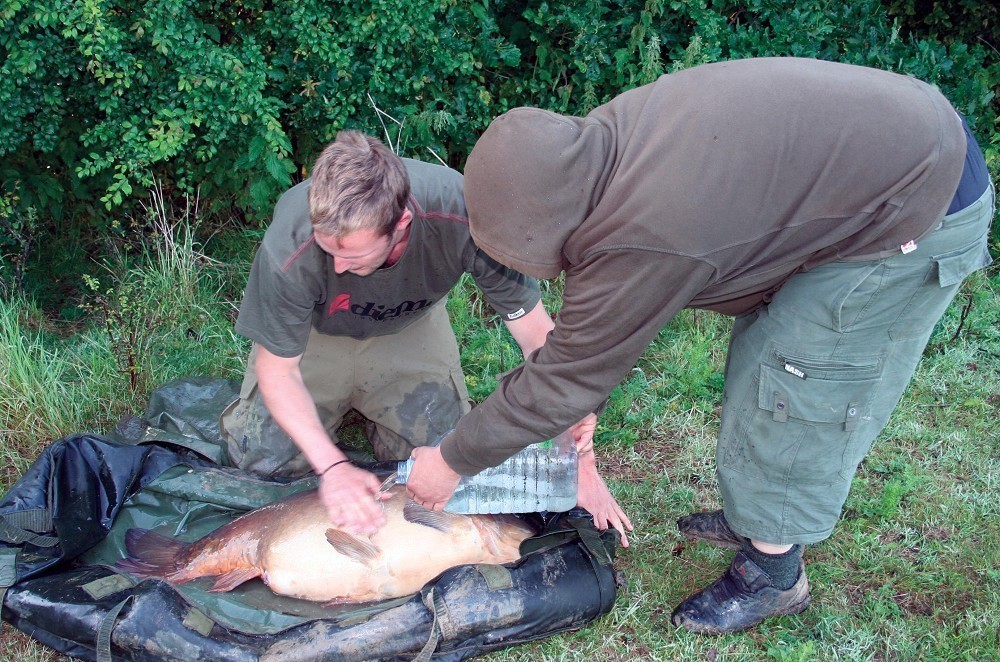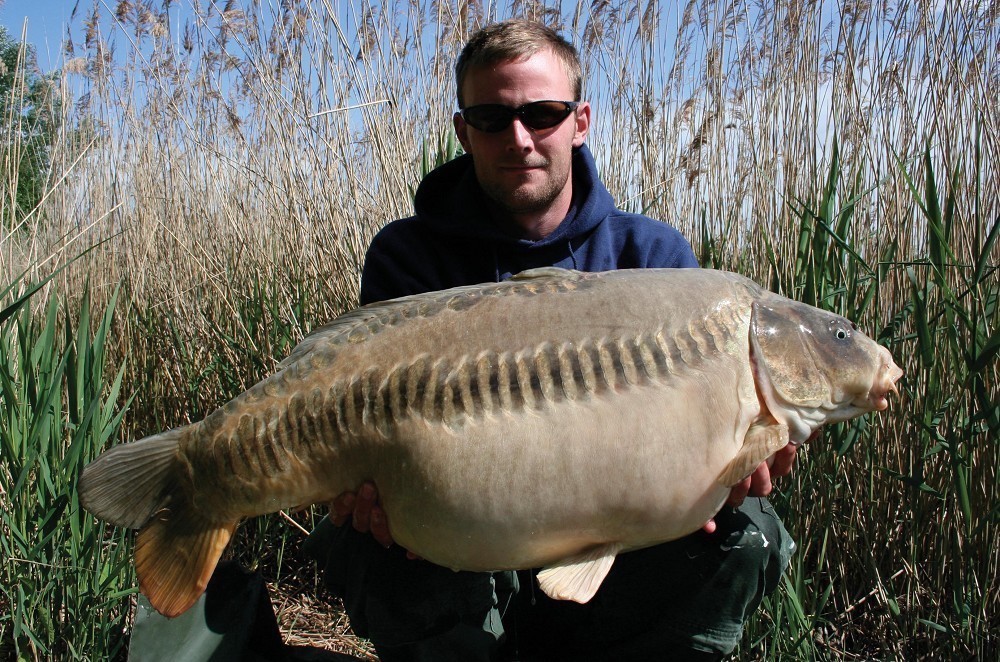How Darrell Peck conquered Manor Farm
No bullsh*t, just good solid angling
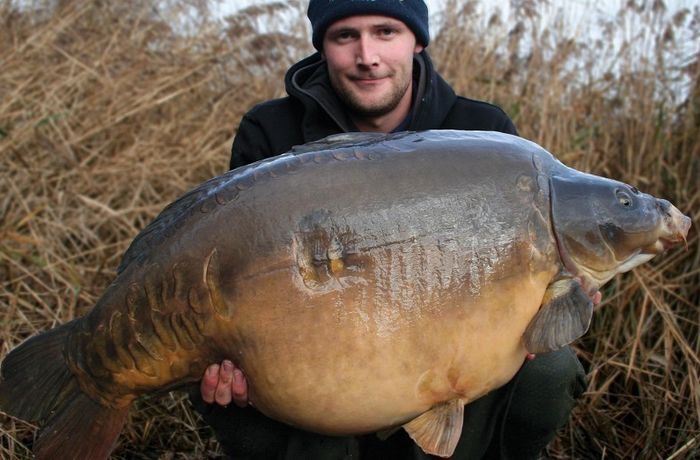
Whilst the first three parts of Pecky’s series focused on large, naturally-rich venues, this time around he’s looking back on his time on the ultra pressured Manor Farm in Essex
It was the year of 2009 when I first received my opportunity to fish one of the best syndicates in the Essex area. As a youngster I’d witnessed the rise of the Amphibian in the weeklies and by the time I came to fish there, this particular friendly mirror had reached a weight of just over 59lbs. The historic little venue didn’t have just one big fish though, far from it, in fact the Essex Manor had/has the most ridiculous number of big fish per acre of any water I have probably ever fished. With an estimated stock of 100 carp, 70 of these weighing over 30lbs and 17 of those having reached 40+. Now that would be mouth-watering enough in any size lake but when you realize they live in seven-acres of irrigation lake, with nowhere to hide you will understand this was a completely different type of lake to that I wrote about in the first three parts of this series. Often when fishing really hard, low stocked lakes I leave home knowing that I’ll probably blank, whereas here it was a refreshing change to know that if I fished well, it was more a case of how many and how big.
Just so you can understand why this lake has so many big fish let me explain. Being situated very close to two of the biggest boilie manufacturers in the world, there has been a lot of muscle flexing over the years with regards to who was getting the most bait in there. These fish, for all intents and purposes, are the products of mass boilie baiting. Now, although they had grown largely artificially that doesn’t make them stupid, it just makes them reliant on angler’s bait to sustain their size which obviously helps when attaching what is almost natural food to your rig.
On the flip side of this though, if too many anglers are baiting stupidly heavy the fish can eat at leisure. What I am getting at is, a hungry fish is much easier to catch than one that’s living space is paved with bacon sandwiches. Luckily for me, as always, my timing was pretty good and the year I fished there, it was only Ali Hamidi and myself that really put any real amount bait in there and then we only did it at the right time.
Point 1: Watercraft and time
The year my Essex Mano> With all that said, whatever time you do have you still have use it to work hard at trying to locate them. At the Manor this was pretty damn easy, not only did they show like it was as necessary as breathing, the lake really lent itself towards angling. The water in spring was crystal clear, the banks relatively high and with good climbing trees. If there was ever a lull in the jumping activity, which was generally in the middle of the day, it was all too easy to climb up a few trees and soon enough you would know where they were. One of the things that struck me about this particular lake was their ability to arrive in swims without lines in. We hear this sort of things all the time in the magazines but I was able to witness it first hand. From the top of a huge tree in The Pump Corner I was able to observe the fish very clearly and it gave me such an advantage to know exactly what they were doing. For example, a point I’ll come to next about understanding the depths. During my first spell on the lake between April and June, from that particular tree, which was as high as a house, I could sometimes see them 10-15ft down as easy as if they were on the surface. What I noticed was that although they were jumping like crazy in the middle of the lake, they were never going anywhere near the bottom there and were certainly not feeding in that depth at that time. At times on sunny mornings they would hang over this 25ft deep abyss showing and showing but I soon realised that a single show in the edge was worth 10 in the middle. All carp under heavy angling pressure seek sanctuary as far from anglers as possible. On lakes with no real safe zone like here, it’s simply sitting off the bottom in the middle. What they would do from here was amazing to watch. They would drift in towards the reedbeds on the marginal shelves and if they came across lines which stood out like a sore thumb they would move back out and then try somewhere else. I know that might sound a little far-fetched, but I promise it was as clear as day from the tree. If I’d not caught overnight or by early morning I knew I was in the wrong spot or I’d been sussed out. A quick shin up the tree would soon tell you where they were feeding, as quite often one of the reedbeds would be surrounded in suspended milky clay cloud as they pillaged the natural larders. Now I never witnessed this in a swim I was already angling in as I think for this feeding frenzy to reach this point, technically something would have to be wrong. What I mean is that if I was fishing effectively and a few fish came in and fed, I would catch one, which in turn would end the snowballing activity. Rarely that spring did I catch more than one fish each day from the same area, as when they saw their mate being dragged in they soon realised they were being angled for, but… If left un-molested, more and more fish would join in and I caught loads of fish by moving onto these situations. During April and early May I’d worked out that I wasn’t fishing for hits over bait like I’d been led to believe. It was all about the opportunist angling for me. I scaled my kit right down keeping all unnecessary extras back at the van and never allowed myself to get tied to a swim. I fished half cocked, anything I didn’t need out was always packed away and if I had the feeling I needed to move, I did it without a second thought. When fishing in this way it’s important to keep the disturbance to a bare minimum as it was all to easy to alert the fish to your presence and ruin the chance. During the down time I would spend time leading around the reedbeds where I had seen them feeding previously. Once a spot was located I would clip-up and walk them up the paths to a certain stick, bush or whatever which is easy when fishing at a maximum range of 30yds. Obviously nowadays we all use distance sticks and take notes on our phones, or at least some do. By doing this when I moved onto the opportunities I was able to get out precisely, but equally important, really minimally and for the most part I only ever fished two rods when I was allowed to use three. Rig-wise, I was having really good results using the Naked Chod Rig and I think it was absolutely perfect for the situations I found myself in. I mentioned there was weed on the shelf and from what I could make out it was of the blanket type not the weed which grows in stems. In the event of narrowly missing these tiny clay spots I knew I was still fishing effectively, i.e. the bait was still visible on top of the weed. It’s also one of the most invisible set-ups in clear water and I think when fished with the top bead relatively short i.e. 15-inches from the lead or less, it works for all intents and purposes like the Hinged Stiff Rig but is less visible. To my mind, for short-range, light lead pop-up work with light blanket weed in clear water there is nothing better. I mentioned earlier that I was lucky in the fact that the year I fished there it wasn’t seeing silly amounts of bait. There are many reasons why heavy baiting can and will work and one is certainly when they are hungry and two is when no one else is doing it. My mobile approach there came about because it was so simply to keep eyes on them and being as I was successful it didn’t take long before other anglers followed my thinking, which in-turn led to a change of tactics. One particular night I’d moved onto showing fish in the early hours and the next day I was lucky enough to catch The Northern Linear at 45lb. This particular fish was known to come out alongside the Amphibian and also from this particular swim called Mums. With this in mind I put at least 10kg of Cell boilies on the spot, in fact it might have even as been as much as 15kgs; I can’t remember exactly. It was a Thursday, I had work the next day and the plan was to arrive Sunday evening and drop on it. Well, the plan appeared to have worked as the Amphibian was spotted over the bait that weekend and in anticipation I rolled myself some Activ-8 corkball pop-ups. The thinking behind this was that most anglers were using bright hookbaits fished over foodbaits, and it was definitely working, it just seemed that many of the lake’s 40+ fish were proving more elusive to this method. In the past I knew this bait had been applied in stupid quantities and I thought a particular big carp such as Annie might quite fancy a past favourite. Well, to cut a long story short I never did catch Annie off that spot that week but I did bag the lake’s second biggest in Stella at 46lbs and couple of the other good fish too. On another occasion I baited another spot at the other end with 10kg and found the Amphibian feeding over it 24hrs later. It was a golden chance. I walked into the marginal spot a bit blasé and unfortunately the great fish just appeared from the cloudy haze puffing her gills guiltily. We came eye-to-eye and the chance was gone just like that. Greedy, but not stupid and unfortunately the big girl died shortly after this period. As they say, ‘you can’t catch them all’ and this is simply a tail of the big one that got away. I am sure I was very close to catching this one and that the pre-baiting would have led to the downfall of that one in the end. Until next time, be lucky.Point 2: Understanding the depths and angling pressure
Point 3: Mobility, Naked Chod Rigs and spots
Now the spots themselves warrant a mention and what I was looking for was exposed clay next to the reeds on the generally weedy marginal shelf. The fish were eating naturals in the weed at times but judging by the clouds of disturbed clay and the fact they often streaked in it I was always lured into fishing on the tiny clean spots myself. I must have said it a million times before but a crisp drop always gives me more confidence than a soft drop.Point 4: Baiting up and dark hookbaits



